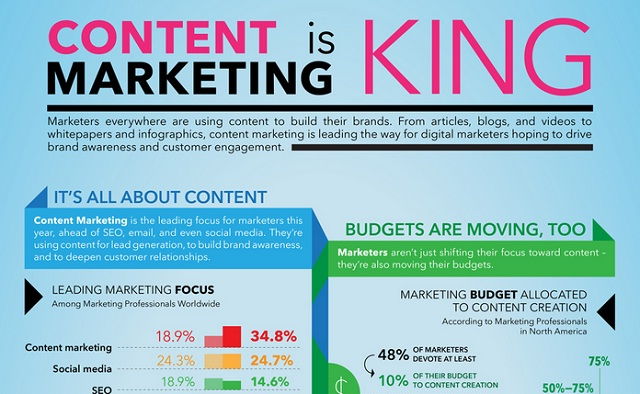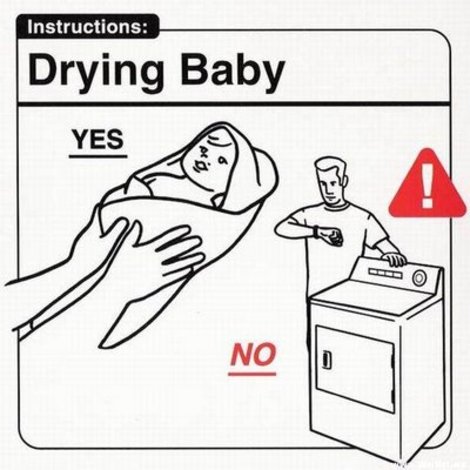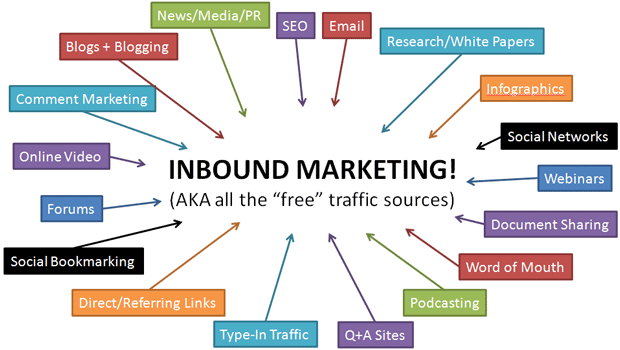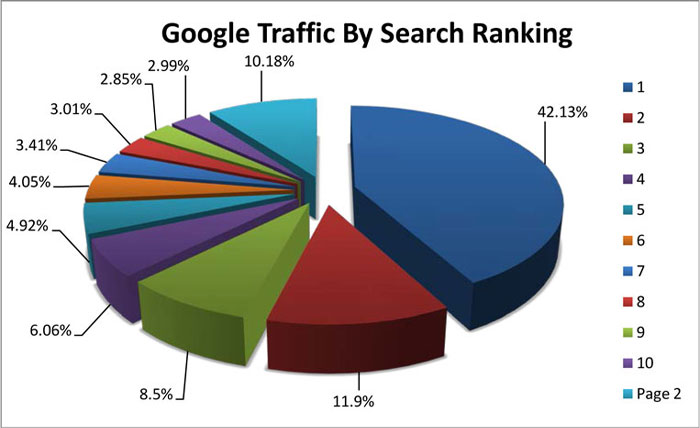Increasing the ROI of content marketing?
Great content marketing takes serious time and energy, and the cost can also become quite high. That’s why it’s important to keep the return on investment (ROI) as high as possible, so you actually get something in return for all your efforts. That “something” can be, for example, more traffic to your website or increased online sales. How to improve your ROI, that’s what we’ll dig into in this series of blog posts.
 Aim for position 0 in Google
Position 0, also known as the featured snippet, is the text box that pops up in a Google search and gives you a direct answer to your search query. Research has shown that position 0 generates a whopping 114% more traffic to a website than position 1. Clearly, it’s well worth the battle! You’ll see the best results by using the right keywords. To help you in that area, you can use Textmetrics Content Ranking. That tool indicates whether you’re on the right track and offers you tips for improved keywords.
Practical tips
You might think that position 0 is only available to online giants like Wikipedia. It’s actually also up for grabs for your company or organization, but of course within search queries that are relevant to your business! To improve your chances of reaching this position, you can apply the tips listed below.
Use questions to your advantage. It’s smart to use actual questions in your web text, like “How do I rank higher in Google?” and “How can I maximize the ROI of my content marketing?” Then you answer the question very briefly in the intro and expand on your answer in the body of the post.
Are you a small business owner? Focus your efforts on local SEO, like “Where can I find a washing machine in Amsterdam?” or “How do I get to the closest café in Victoria?” Make sure to answer those questions briefly, just like in tip 1.
Use keywords that already score high in other articles on your website. Not sure which ones those are? Try using the handy Content Ranking Index by Textmetrics.
Run the Textmetrics Keyword Analysis to link the search queries related to your top keywords. That way you know exactly which searches rank highest in Google, allowing you to adjust your web copy accordingly.
Position 0 likes things to the point and strong. The long pieces of web copy you use to explain a product or service won’t score you that ranking. That’s why it’s smart to create separate pieces of content containing about 54 to 58 words in total. Don’t forget about longer blog posts and articles altogether, since Google likes those, too. Make sure you include both styles on your website. Or make sure you have a main question followed by a short summary of a longer post.
Columns, tables, rankings, lists… Position 0 loves those! Definitely use them in your content, just like we’ve done here.
Make sure your articles and blogs are connected to related questions. Try explaining any jargon specific to your business on a separate page or come up with some questions that are linked to the topic of discussion in your article.
Stay alert! Textmetrics Content Ranking Index will keep track of how you’re scoring in comparison to your competitors. That way you know exactly when it’s time to take action.
Automation of SEO. Textmetrics offers the plug-in ‘SEO-editor’, which you can apply to your website (compatible with WordPress, Drupal, Joomla, SiteCore, and Word). It automatically ensures that your content is made Google-proof. Easy peasy, right?
Aim for position 0 in Google
Position 0, also known as the featured snippet, is the text box that pops up in a Google search and gives you a direct answer to your search query. Research has shown that position 0 generates a whopping 114% more traffic to a website than position 1. Clearly, it’s well worth the battle! You’ll see the best results by using the right keywords. To help you in that area, you can use Textmetrics Content Ranking. That tool indicates whether you’re on the right track and offers you tips for improved keywords.
Practical tips
You might think that position 0 is only available to online giants like Wikipedia. It’s actually also up for grabs for your company or organization, but of course within search queries that are relevant to your business! To improve your chances of reaching this position, you can apply the tips listed below.
Use questions to your advantage. It’s smart to use actual questions in your web text, like “How do I rank higher in Google?” and “How can I maximize the ROI of my content marketing?” Then you answer the question very briefly in the intro and expand on your answer in the body of the post.
Are you a small business owner? Focus your efforts on local SEO, like “Where can I find a washing machine in Amsterdam?” or “How do I get to the closest café in Victoria?” Make sure to answer those questions briefly, just like in tip 1.
Use keywords that already score high in other articles on your website. Not sure which ones those are? Try using the handy Content Ranking Index by Textmetrics.
Run the Textmetrics Keyword Analysis to link the search queries related to your top keywords. That way you know exactly which searches rank highest in Google, allowing you to adjust your web copy accordingly.
Position 0 likes things to the point and strong. The long pieces of web copy you use to explain a product or service won’t score you that ranking. That’s why it’s smart to create separate pieces of content containing about 54 to 58 words in total. Don’t forget about longer blog posts and articles altogether, since Google likes those, too. Make sure you include both styles on your website. Or make sure you have a main question followed by a short summary of a longer post.
Columns, tables, rankings, lists… Position 0 loves those! Definitely use them in your content, just like we’ve done here.
Make sure your articles and blogs are connected to related questions. Try explaining any jargon specific to your business on a separate page or come up with some questions that are linked to the topic of discussion in your article.
Stay alert! Textmetrics Content Ranking Index will keep track of how you’re scoring in comparison to your competitors. That way you know exactly when it’s time to take action.
Automation of SEO. Textmetrics offers the plug-in ‘SEO-editor’, which you can apply to your website (compatible with WordPress, Drupal, Joomla, SiteCore, and Word). It automatically ensures that your content is made Google-proof. Easy peasy, right?
 Use smart tools
By applying the tips listed above, you’ll improve your chances of conquering position 0 in Google. But that can only work if your SEO basics are in place. Check to make sure that your website is completely optimized before even thinking of position 0. Make things easy on yourself, though, by using our Content Creation Engine and the Textmetrics Content Ranking. These smart tools make it much easier and a lot more fun to write great, discoverable, and Google-friendly content. Need more help than that? In this blog you’ll find more information.
Whitepaper SEO
Would you like to dig a bit deeper into SEO and how to best apply it to your website? You could, of course, dig through thousands of whitepapers about SEO, all available online. But if you lack the time and desire to do that, you can simply use the Content Creation Engine by Textmetrics. Just start writing, and our tool offers you tips to update your SEO along the way.
Our team is always up-to-date, does take the time to read all the thousands of SEO whitepapers, and then integrates all that information into the Content Creation Engine. That way you can create great content quickly, without having to hit the books first. You can even have it check your “older” content. Copy and paste the existing copy into our tool to get advice about SEO. The tool will check the text against the latest rules and guidelines for Google and offer advice on that front. Implement the points of improvement, then paste the optimized text back into your website. It’s practically child’s play!
.
Use smart tools
By applying the tips listed above, you’ll improve your chances of conquering position 0 in Google. But that can only work if your SEO basics are in place. Check to make sure that your website is completely optimized before even thinking of position 0. Make things easy on yourself, though, by using our Content Creation Engine and the Textmetrics Content Ranking. These smart tools make it much easier and a lot more fun to write great, discoverable, and Google-friendly content. Need more help than that? In this blog you’ll find more information.
Whitepaper SEO
Would you like to dig a bit deeper into SEO and how to best apply it to your website? You could, of course, dig through thousands of whitepapers about SEO, all available online. But if you lack the time and desire to do that, you can simply use the Content Creation Engine by Textmetrics. Just start writing, and our tool offers you tips to update your SEO along the way.
Our team is always up-to-date, does take the time to read all the thousands of SEO whitepapers, and then integrates all that information into the Content Creation Engine. That way you can create great content quickly, without having to hit the books first. You can even have it check your “older” content. Copy and paste the existing copy into our tool to get advice about SEO. The tool will check the text against the latest rules and guidelines for Google and offer advice on that front. Implement the points of improvement, then paste the optimized text back into your website. It’s practically child’s play!
.




 Well, so what do they want? Too often business owners and marketers will be so concerned with our desires for immediate gratification, that we forget the most important part of the user experience is to first know what the user wants to begin with. The User’s wishes have to be fulfilled, and this can only be done by understanding what their actual wants are.
Well, so what do they want? Too often business owners and marketers will be so concerned with our desires for immediate gratification, that we forget the most important part of the user experience is to first know what the user wants to begin with. The User’s wishes have to be fulfilled, and this can only be done by understanding what their actual wants are.
 In the end, the most likely reason a user will be at your site is the content they are searching for. Ensuring that you have the right content for your target market is always the starting point of a strong User Experience Web Design and Development strategy.
A futuristic idea is to eventually engage with more than just dynamic content. Some sites and developers are trying to design and develop with predictively created content in mind. No, this isn’t a reference to retrieving content predictively for an individual, but to aggregated and create content customized for that individual, based on their wishes. Many apps and sites are trying this now, but are still locked in predisposed rules, there is some traction to developing a truly customized experience with completely original and created content based solely on the user’s desires. The option of AI responsiveness is also worth mentioning since it would be the logical step forward in producing a truly responsive development. How long something like that will take to get here is only limited to our motivation to bring it.
In the end, the most likely reason a user will be at your site is the content they are searching for. Ensuring that you have the right content for your target market is always the starting point of a strong User Experience Web Design and Development strategy.
A futuristic idea is to eventually engage with more than just dynamic content. Some sites and developers are trying to design and develop with predictively created content in mind. No, this isn’t a reference to retrieving content predictively for an individual, but to aggregated and create content customized for that individual, based on their wishes. Many apps and sites are trying this now, but are still locked in predisposed rules, there is some traction to developing a truly customized experience with completely original and created content based solely on the user’s desires. The option of AI responsiveness is also worth mentioning since it would be the logical step forward in producing a truly responsive development. How long something like that will take to get here is only limited to our motivation to bring it. Instead of trying to rank for random and "got lucky" terms, or trying to convert those who arrived at your site while looking for something your don't actually provide, your site team should be planning specific Inbound Marketing terms to use in your Search Traffic Strategy (STS).
Instead of trying to rank for random and "got lucky" terms, or trying to convert those who arrived at your site while looking for something your don't actually provide, your site team should be planning specific Inbound Marketing terms to use in your Search Traffic Strategy (STS).  Your STS strategy should culminate with one specific goal: converting visitors to your site's primary purpose. If you have an ecommerce site, then the your strategy should focus on targeted traffic likely to desire your products. The same holds true for services, content, blogs or any other type of site you are trying to deliver qualified search traffic to.
There are many blogs offering "Top 5 Search Strategy", or "6 Search Traffic Items You Can't Ignore", and any other spammy title of the like, but these are more for promoting that SEO Company's blog than to assist you in your goals. Instead, we are going to simply list a couple of common sense solutions to amplify your Search Traffic Strategy and boost your converted inbound marketing. You'll find tons of blogs pushing strategies like the image below, but effectively, throwing all the crap at the wall and hoping it sticks isn't a strategy for anything but mayhem.
Your STS strategy should culminate with one specific goal: converting visitors to your site's primary purpose. If you have an ecommerce site, then the your strategy should focus on targeted traffic likely to desire your products. The same holds true for services, content, blogs or any other type of site you are trying to deliver qualified search traffic to.
There are many blogs offering "Top 5 Search Strategy", or "6 Search Traffic Items You Can't Ignore", and any other spammy title of the like, but these are more for promoting that SEO Company's blog than to assist you in your goals. Instead, we are going to simply list a couple of common sense solutions to amplify your Search Traffic Strategy and boost your converted inbound marketing. You'll find tons of blogs pushing strategies like the image below, but effectively, throwing all the crap at the wall and hoping it sticks isn't a strategy for anything but mayhem.
 Instead, make a decisive list of keywords to track, and pay little, if any attention to the others without traffic data to legitimize them as useful terms. You will want to ensure that your keywords are ones that convert traffic and sales, and as a result, this will be a criteria needing regular investigation. Again, this is where the scared SEO Tech will bring up ranking for random terms, but be mindful that these terms will need serious scrutiny. When adding additional terms to your watch list, ensure that they produce. Search new keywords in "Google Trends" to see if they have any ranking. This is especially true when you dig down to your local market. If you rank #1 for a term that gets 1 local search per month, then it might not be one worth nurturing.
If your SEO Expert tells you that this is a needed term, you may want to look for a more qualified representative. Ultimately, there will be new tools to pick up at every turn along the path, so most importantly, remain teachable. SEO and Search Traffic Strategy are fluid and will require updating methods to adapt to updated measures.
Instead, make a decisive list of keywords to track, and pay little, if any attention to the others without traffic data to legitimize them as useful terms. You will want to ensure that your keywords are ones that convert traffic and sales, and as a result, this will be a criteria needing regular investigation. Again, this is where the scared SEO Tech will bring up ranking for random terms, but be mindful that these terms will need serious scrutiny. When adding additional terms to your watch list, ensure that they produce. Search new keywords in "Google Trends" to see if they have any ranking. This is especially true when you dig down to your local market. If you rank #1 for a term that gets 1 local search per month, then it might not be one worth nurturing.
If your SEO Expert tells you that this is a needed term, you may want to look for a more qualified representative. Ultimately, there will be new tools to pick up at every turn along the path, so most importantly, remain teachable. SEO and Search Traffic Strategy are fluid and will require updating methods to adapt to updated measures. In the old days of Search Engine Marketing, and sometimes still true today, ad agencies would charge ridiculous amounts of money for ad driven traffic even when it had nothing to do with a site's content. Conversions were low and bounce rates were high. Today, the same is still occurring but now expanded to SEO campaigns. In Chicago it is far too common to find websites littered with footers pages for each individual township and suburb. At first, companies like Reach Local and Orange Soda did this as a way to push relevant content and lift their own clients in the SERPs. The problem was, these pages were comprised of the same city data, spun over and over, and leaving multiple sites with the same giant spam bomb in the footer and sitemap of each of their clients. Many freelance and smaller SEO Companies in Chicago followed this blueprint and littered the search results with more of the same. As a result, the practice became one of the basic principles to Chicago SEO tactics.
Poor overall traffic from high SEO placement is another problem. Imagine a keyword ranking at the #1 position but only delivering 50 visitors a month, and then a keyword that was ranking in the #6 position that was delivering 900 visitors a month - which one would you rather? Traffic numbers are much more valuable than rankings alone and converted traffic is the primary focus.
This cheap and semi-effective SEO and SERP placement method had a major downfall: when the sites received the positive listings resulting from all of the city data, they also received few visitors willing to trudge through the mounds of crap content to find what they were actually interested in. The basic remedy for this problem is the keystone for the framework of Search Optimized Traffic.
In the old days of Search Engine Marketing, and sometimes still true today, ad agencies would charge ridiculous amounts of money for ad driven traffic even when it had nothing to do with a site's content. Conversions were low and bounce rates were high. Today, the same is still occurring but now expanded to SEO campaigns. In Chicago it is far too common to find websites littered with footers pages for each individual township and suburb. At first, companies like Reach Local and Orange Soda did this as a way to push relevant content and lift their own clients in the SERPs. The problem was, these pages were comprised of the same city data, spun over and over, and leaving multiple sites with the same giant spam bomb in the footer and sitemap of each of their clients. Many freelance and smaller SEO Companies in Chicago followed this blueprint and littered the search results with more of the same. As a result, the practice became one of the basic principles to Chicago SEO tactics.
Poor overall traffic from high SEO placement is another problem. Imagine a keyword ranking at the #1 position but only delivering 50 visitors a month, and then a keyword that was ranking in the #6 position that was delivering 900 visitors a month - which one would you rather? Traffic numbers are much more valuable than rankings alone and converted traffic is the primary focus.
This cheap and semi-effective SEO and SERP placement method had a major downfall: when the sites received the positive listings resulting from all of the city data, they also received few visitors willing to trudge through the mounds of crap content to find what they were actually interested in. The basic remedy for this problem is the keystone for the framework of Search Optimized Traffic.
